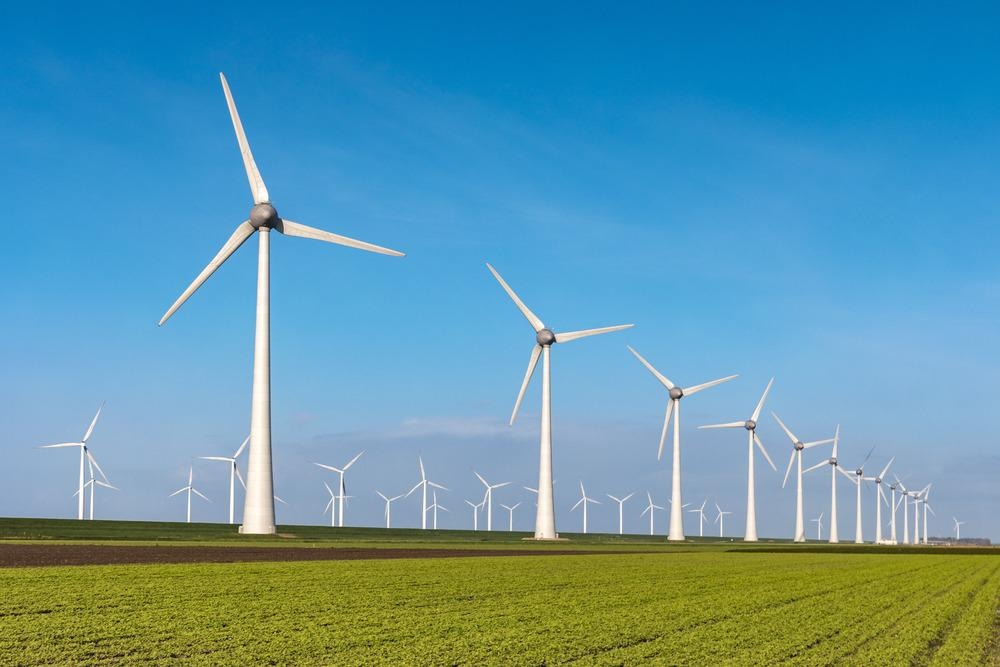Reviewed by Alex SmithSep 24 2021
Researchers from China have undertaken a study of the impacts of wind farm construction and operation on the local climate and environment.
 Image Credit: Shutterstock.com/ fokke baarssen
Image Credit: Shutterstock.com/ fokke baarssen
Collaborators from the Northwest Institute of Eco-Environment and Resources of the Chinese Academy of Sciences (CAS) chose an onshore wind farm located in North China as a case study to analyze the effects of a large onshore wind farm on the local climate and ecosystem.
Wind power is regarded as a green, emission-free, and sustainable energy source, which has resulted in several large-scale wind farms around the world.
In the last decade, China has continuously led the global wind energy market, showing the development of roughly 35% of the world’s installed wind power capacity.
However, the effects of the quick installation of wind turbines on regional climates and ecosystems are not well known. Keen research is required to determine the necessary measures to overcome the negative impacts.
This study considered the data from an onshore wind farm in North China. The researchers assessed the influence of wind farms on the local climate and ecology and comprehended the variations in local and regional climate and environmental characteristics caused by seasonal and diurnal climate changes.
From the researchers’ perspective, following the construction of the assessed wind farm, there was a decrease in the annual wind speed and an increase in the air temperature and ground temperature.
Moreover, evapotranspiration exhibited a remarkable increasing trend.
The study offers some evidence regarding the effect of wind farms on air temperature, wind, ground surface temperature, evapotranspiration, and land surface temperature.
The air temperature and the land surface temperature varied significantly over the day and night cycle. The land surface temperature increased and air temperature decreased at night, and both the temperatures dropped during the daytime.
The variation in land surface temperature was the greatest at the wind farm and in its downwind zone. This implied that the operation of the wind farm impacts the land surface temperature, both within and beyond a buffer zone of 10 km.
The vegetation in the region showed a notable positive trend following the wind farm construction. The increased titanium (Ti) and Co concentration in the wind farm compared to the buffer zone reveals the threat of soil pollution due to the construction and operation of wind farms.
To summarize, the wind farms affected the microclimate of the research area but did not degrade the vegetative growth. However, soil pollution was observed.
The study contributed to the sustainable development of wind energy in North China. Strengthening the monitoring aspects of the wind farms is required to uncover the long-term effects of the continued expansion of wind farms on local climates and ecosystems.
Journal Reference:
Luo, L., et al. (2021) Local climatic and environmental effects of an onshore wind farm in North China. Agricultural and Forest Meteorology. doi.org/10.1016/j.agrformet.2021.108607.